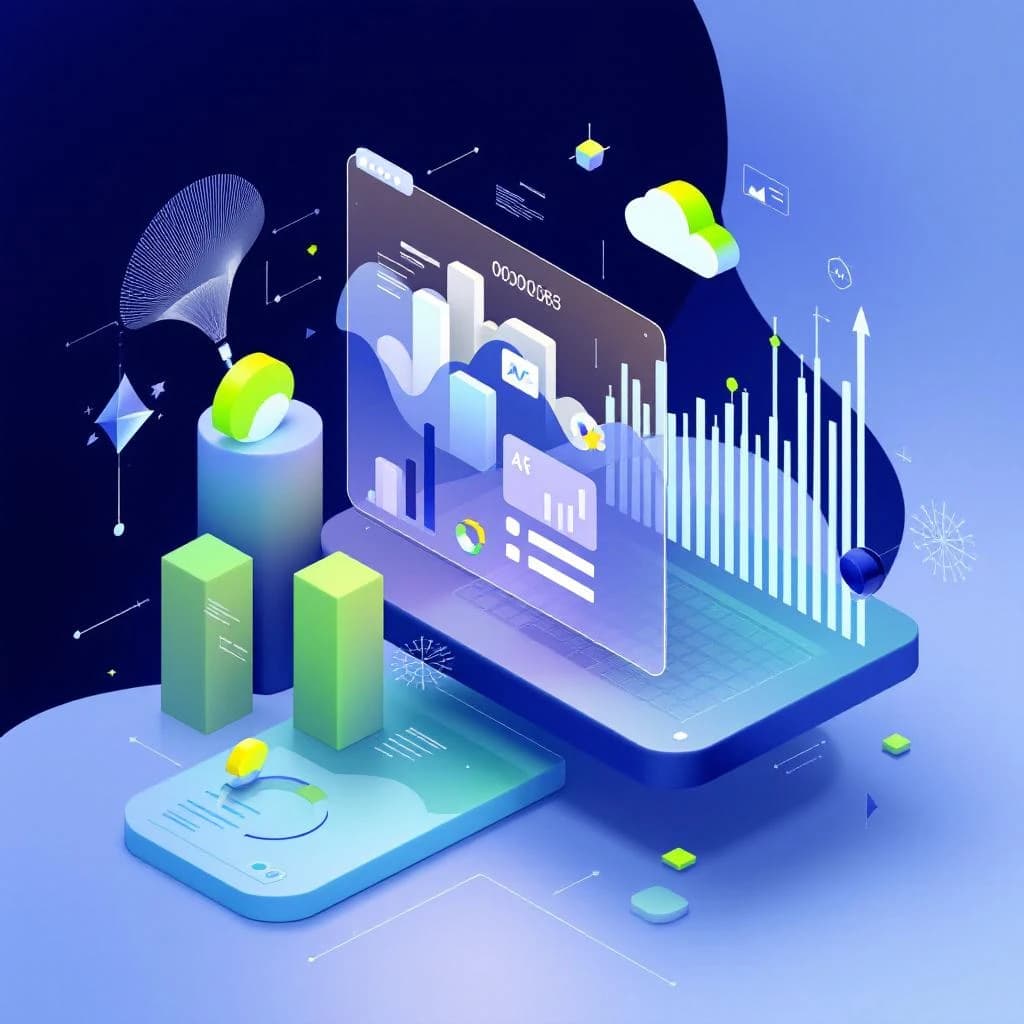AI Personalization B2B: What's Actually Working in 2025

AI Personalization B2B: What's Actually Working in 2025
Whilst 85% of B2B marketers are already using AI for personalisation, the gap between adoption and execution remains vast. Most B2B sales teams are still sending generic outreach at scale, wondering why their response rates hover around 1-2%.
The reality? AI personalization in B2B isn't just about inserting a prospect's name into your email template anymore. In 2025, the companies winning deals are leveraging sophisticated AI systems that analyse buying patterns, predict intent, and craft messaging that resonates at an individual level.
This guide reveals exactly what's working in AI-powered B2B personalization right now—from the strategies driving 10x response rates to the specific tools and frameworks top-performing sales teams are using to build predictable pipeline.
The Current State of AI Personalization in B2B Sales
The AI personalization landscape has evolved dramatically over the past 18 months. What started as basic dynamic content insertion has transformed into sophisticated systems that can predict buyer behaviour and craft highly targeted messaging strategies.
📊 74% of B2B buyers expect personalised experiences similar to B2C interactions
This expectation shift has created both opportunity and pressure for B2B sales teams. Prospects now expect sellers to understand their specific challenges, industry dynamics, and business context before the first conversation even begins.
The most successful teams are moving beyond surface-level personalisation to what industry experts call "contextual intelligence"—using AI to understand not just who their prospects are, but where they are in their buying journey and what factors are likely to influence their decisions.
The Personalization Maturity Model
Most B2B organisations fall into one of four categories:
- Basic: Name and company insertion (90% of teams)
- Intermediate: Industry-specific messaging (60% of teams)
- Advanced: Role and intent-based personalisation (25% of teams)
- Elite: Predictive personalisation with real-time adaptation (5% of teams)
What's Actually Driving Results in 2025
Hyper-Targeted Account Intelligence
The biggest breakthrough in AI personalization has been the ability to synthesise vast amounts of account data into actionable insights. Leading teams are using AI to analyse everything from recent funding announcements to technology stack changes, creating messaging that speaks directly to current business priorities.
💡 Key Insight: Teams using AI-powered account intelligence see 340% higher response rates compared to generic outreach
Successful implementation focuses on three core data layers:
- Firmographic data: Company size, industry, growth stage
- Technographic data: Current tools, recent implementations, stack gaps
- Intent data: Research behaviour, content consumption, buying signals
Predictive Messaging Frameworks
Rather than crafting individual messages from scratch, top-performing teams are using AI to predict which messaging frameworks will resonate with specific prospect profiles. Companies using AI for sales personalisation report 67% higher conversion rates from initial outreach to qualified meetings.
⚡ Pro Tip: Create messaging variants for each stage of the buyer's journey, then use AI to determine which stage your prospect is in
Dynamic Content Optimisation
The most sophisticated teams are using AI to continuously optimise their messaging based on response patterns. This goes beyond A/B testing to real-time adaptation based on prospect behaviour and engagement signals.
The Technologies Powering Success
AI-Powered Research and Intelligence
Manual prospect research is becoming obsolete. The teams winning deals in 2025 are using AI systems that can analyse a prospect's digital footprint in seconds, identifying key talking points, recent business developments, and potential pain points.
📊 91% of B2B marketers believe AI helps them better understand customer behaviour
These systems excel at:
- Social media sentiment analysis
- News and press release monitoring
- Job posting analysis for growth indicators
- Competitive intelligence gathering
Conversational AI Integration
The integration of conversational AI into sales processes has reached a tipping point. Rather than replacing human sellers, ### Predictive Analytics Platforms
Advanced teams are using AI to predict not just who to contact, but when and how to contact them. ## Implementation Strategies That Work
The Graduated Approach
Successful AI personalization implementation follows a structured progression:
- Foundation: Implement basic data collection and segmentation
- Enhancement: Add intent data and behavioral triggers
- Sophistication: Integrate predictive analytics and dynamic content
- Optimisation: Continuous learning and real-time adaptation
💡 Key Insight: Teams that try to implement advanced AI personalization without proper foundations see 60% lower adoption rates
Data Quality as the Foundation
The most common failure point in AI personalization initiatives isn't the technology—it's data quality. B2B teams using clean, structured data see 45% better AI performance compared to those working with incomplete datasets.
Human-AI Collaboration Models
The highest-performing teams aren't replacing human insight with AI—they're creating collaboration models where AI handles data analysis and pattern recognition whilst humans focus on relationship building and strategic thinking.
Measuring Success: KPIs That Matter
Beyond Open Rates
Whilst email open rates remain important, the teams seeing real ROI from AI personalization are tracking more sophisticated metrics:
- Response quality score: Measuring engagement depth, not just response rate
- Meeting show rate: Tracking how personalisation affects meeting attendance
- Pipeline velocity: Time from first contact to qualified opportunity
- Deal size correlation: How personalisation impacts average deal value
📊 Companies using AI-driven personalization report 23% faster sales cycles
Attribution and ROI Tracking
Advanced teams are implementing multi-touch attribution models that can isolate the impact of AI personalization on revenue outcomes. This requires sophisticated tracking but provides clear ROI justification for continued investment.
Common Pitfalls and How to Avoid Them
Over-Automation Without Human Oversight
The biggest mistake teams make is implementing AI personalization without adequate human oversight. Whilst AI excels at pattern recognition and data analysis, human judgment remains crucial for context and relationship nuance.
Focusing on Technology Over Strategy
Many implementations fail because teams focus on the AI tools rather than the underlying personalization strategy. The technology should support your approach to relationship building, not drive it.
⚡ Pro Tip: Start with your ideal customer conversations, then work backwards to determine what AI capabilities you need
Insufficient Testing and Iteration
AI personalization requires continuous optimisation. Teams that implement once and expect consistent results typically see performance decline over time as market conditions and buyer behaviour evolve.
Future-Proofing Your Approach
Emerging Trends to Watch
Bain's research indicates that AI adoption in sales will accelerate by 200% over the next two years. The teams positioning themselves for this growth are investing in:
- Cross-channel personalization orchestration
- Real-time sentiment analysis and response adaptation
- Predictive customer lifetime value modeling
- AI-powered competitive positioning
Building Scalable Systems
The most successful AI personalization implementations are designed for scale from day one. This means creating frameworks and processes that can handle increased volume without proportional increases in manual effort.
Preparing for Increased Competition
As AI personalization becomes more accessible, the competitive advantage will shift to execution quality and strategic application rather than technology access. Teams winning in this environment focus on:
- Deeper customer understanding
- More sophisticated data integration
- Better human-AI collaboration
- Continuous learning and adaptation
Key Takeaways
- AI personalization success requires clean, structured data as the foundation—invest in data quality before advanced AI features
- The most effective teams use AI for research and insights whilst maintaining human control over relationship strategy and messaging tone
- Predictive messaging frameworks outperform individual message crafting, with AI determining optimal timing and channel selection
- Success metrics should focus on engagement quality and pipeline velocity rather than just open rates and response volumes
- Implementation should follow a graduated approach, building capabilities incrementally rather than attempting full automation immediately
- Human-AI collaboration models produce better results than full automation, with AI handling analysis and humans managing relationship nuance
- Continuous testing and optimisation are essential as buyer behaviour and market conditions evolve rapidly
Recommended Tools
These tools can help you implement the strategies discussed in this article.
Clay
Data Enrichment
All-in-one data enrichment and workflow automation platform
From $149/month
- ✓75+ data providers
- ✓AI-powered enrichment
- ✓Workflow automation
- ✓Waterfall enrichment
We may earn a commission at no cost to you
Smartlead
Cold Email Platform
Advanced cold email platform with unlimited inboxes and AI optimization
From $39/month
- ✓Unlimited email accounts
- ✓AI-powered email warmup
- ✓Advanced deliverability tools
- ✓Multi-channel sequences
We may earn a commission at no cost to you
Lemlist
Data Enrichment
Multichannel outreach with built-in data enrichment
From $59/month
- ✓Email enrichment
- ✓LinkedIn automation
- ✓Personalized images
- ✓Multi-channel campaigns
We may earn a commission at no cost to you
Conclusion
AI personalization in B2B sales has moved beyond the experimental phase into proven territory. The companies seeing dramatic results aren't just using better technology—they're implementing systematic approaches that combine AI capabilities with human insight and strategic thinking.
The key is starting with clear objectives, building solid data foundations, and implementing gradually whilst measuring what matters. Teams that master this balance are seeing response rates 5-10x higher than generic outreach, shorter sales cycles, and more predictable pipeline generation.
If you're looking to build predictable pipeline and scale your GTM execution with AI-powered personalization, ProspectX can help. We deliver elite execution through data-driven strategies that book qualified meetings and accelerate revenue growth. Our systematic approach to ai personalization b2b ensures you're not just keeping up with 2025's sales landscape—you're leading it.
Affiliate Disclosure: Some links in this article are affiliate links, which means we may earn a commission if you make a purchase. This comes at no additional cost to you and helps us continue creating valuable content.
Ready to Build Predictable Pipeline?
ProspectX delivers elite GTM execution through data-driven strategies. We handle everything from ICP research to qualified meetings in your target markets—helping you scale with precision.


